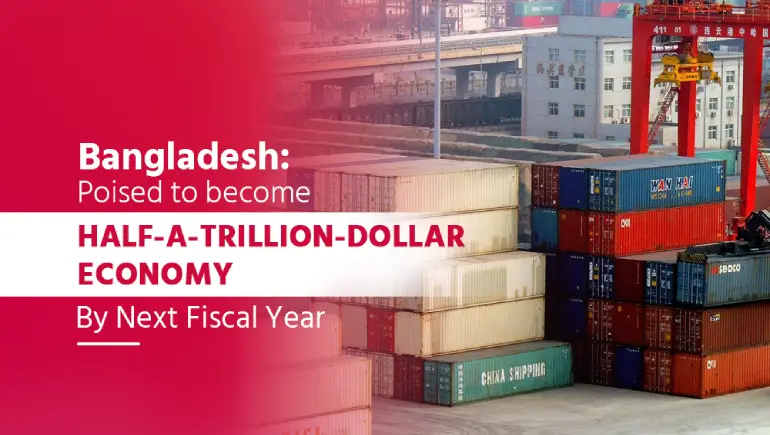
Bangladesh is poised to cross a major economic milestone by the fiscal year 2026-27 (FY27), as it gears up to become a $500 billion economy. Backed by resilient exports, growing domestic consumption, and steady infrastructural development, this South Asian nation is on track to solidify its status as one of the fastest-growing economies in the world.
Over the past two decades, Bangladesh has shown remarkable economic transformation. With an average GDP growth rate exceeding 6% since the early 2000s and hitting even higher rates in the last decade, the country has transitioned from a low-income to a lower-middle-income nation. The government’s proactive fiscal policies, digitalization efforts, and investment in mega infrastructure projects have all contributed to this sustained growth.
The International Monetary Fund (IMF) and Asian Development Bank (ADB) forecast Bangladesh’s GDP to cross the $500 billion mark by FY27, signaling a strong recovery post-pandemic and resilience amid global economic uncertainty.
The backbone of Bangladesh’s economy, the RMG sector accounts for over 80% of export earnings. With improvements in compliance, sustainability, and worker safety, global brands continue to rely on Bangladeshi manufacturers for quality production at competitive costs.
Bangladeshi workers abroad contribute significantly to the economy, sending home over $20 billion annually. Increased digital channels and incentives for remittance inflows have boosted foreign currency reserves and rural spending power.
Mega projects like the Padma Bridge, Dhaka Metro Rail, and deep-sea ports are accelerating regional connectivity and trade. These projects are expected to reduce logistics costs and improve business efficiency.
With mobile penetration and internet use rapidly rising, Bangladesh is fostering a strong digital economy. The “Digital Bangladesh” vision is propelling e-commerce, fintech, and IT outsourcing to new heights.
Despite its promising outlook, Bangladesh must navigate several structural challenges:
To stay on course, the government will need to strengthen institutional frameworks, improve governance, and enhance skill development to support its expanding economy.
Bangladesh reaching a half-trillion-dollar GDP by FY27 will not only mark a domestic achievement but also elevate its geopolitical and economic significance in South Asia. With strategic trade ties, competitive manufacturing, and a growing consumer base, Bangladesh could become a central player in regional supply chains and global commerce.
As Bangladesh approaches its $500 billion GDP goal, the nation is demonstrating what sustained planning, entrepreneurship, and inclusive development can achieve. While challenges remain, the country’s ability to adapt and grow offers a roadmap for emerging economies worldwide. FY27 may well be remembered as the year Bangladesh fully claimed its place on the global economic map.












Comments
There are no comments for this Article.